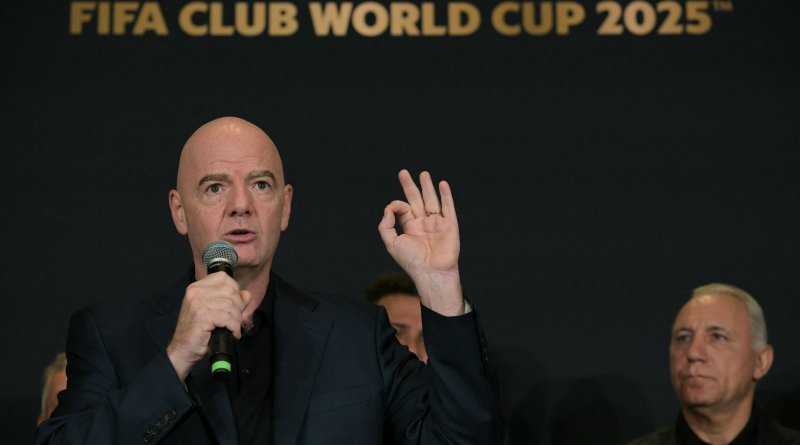2026 World Cup to Beat Heat with Covered Stadiums
2026 World Cup organisers are preparing the most climate-conscious tournament in history after FIFA president Gianni Infantino confirmed that matches played in the United States, Canada and Mexico will largely take place inside covered stadiums to counter fierce summer temperatures.
Why the 2026 World Cup Needs Covered Stadiums
The 2026 World Cup spans three vast nations, from Mexico City’s lofty altitude to sweltering midsummer afternoons in Dallas and Atlanta. July temperatures in several host cities routinely exceed 35°C (95°F), and humidity can push the “feels-like” figure even higher. Player-tracking data from recent FIFA events shows performance drops when ambient temperatures climb above 30°C, while the risk of heat-related illnesses multiplies for supporters packed inside full venues.
Lessons Learned from the Club World Cup
Infantino referenced the ongoing FIFA Club World Cup, where severe heat and thunderstorms disrupted training schedules. Matches in Saudi Arabia required extra cooling breaks and saw energy-intensive air-conditioning systems running at full tilt. FIFA’s medical team filed a comprehensive report urging earlier kick-off adjustments and stadium design upgrades for the next flagship event—the 2026 World Cup.
Stadium Inventory: Who Has a Roof and Who Does Not?
Of the 16 confirmed host venues, only four currently boast retractable roofs and in-bowl cooling: AT&T Stadium (Arlington), NRG Stadium (Houston), Mercedes-Benz Stadium (Atlanta) and BC Place (Vancouver). FIFA has started negotiations with venue operators in Los Angeles, Guadalajara and New Jersey to fast-track temporary roofing solutions or advanced misting canopies. The governing body will foot part of the bill, citing “player welfare and fan safety” as non-negotiable priorities.
Technology Behind Modern Covered Stadiums
Retractable structures employ lightweight ETFE panels, which let in natural light while reflecting infrared radiation. Combined with high-capacity HVAC units and under-seat diffusers, these systems can lower pitch-side temperatures by up to 10°C within 30 minutes. For the 2026 World Cup, FIFA wants carbon-neutral operations, so solar arrays and onsite battery storage will power the cooling network during daylight hours.
Kick-Off Times Adjusted for Global Audiences
While European broadcasters might prefer early afternoon kick-offs, FIFA’s scheduling team is leaning toward late evenings to maximise comfort. Provisional fixtures show group-stage matches starting as late as 10 p.m. local time in southern U.S. cities, mirroring the approach used at Qatar 2022. The combination of covered roofs and cooler nights should keep the core body temperature of players within acceptable ranges.
Player Reactions
United States captain Christian Pulisic welcomed the announcement, noting that “summer in Texas can feel like a furnace.” Canada’s Alphonso Davies added that covered arenas “level the playing field” for teams unaccustomed to extreme heat. Medical experts from FIFA’s Performance & Health department have already scheduled on-site inspections to validate each venue’s micro-climate targets.
Environmental Impact and Sustainability Goals
A covered stadium may sound energy-hungry, but the overall ecological footprint can be lower than running open-air cooling towers. Roofs trap conditioned air, reducing wastage. FIFA’s sustainability roadmap demands that all 2026 World Cup arenas achieve LEED Gold certification or equivalent. Organisers also pledge to offset residual emissions through reforestation projects across North America.
Economic Upside for Host Cities
Retro-fitting or building covered stadiums injects new jobs into local economies. Dallas officials estimate an additional $400 million in construction contracts, while Vancouver’s upgrade of BC Place will be bundled with a downtown revitalisation scheme. Long-term, cities gain multi-purpose arenas capable of hosting concerts and conventions year-round, boosting tax revenue.
What Still Needs to Happen?
Despite the ambitious plan, logistical hurdles remain. Mexico’s Estadio Azteca, an iconic open-air bowl, would require a massive and potentially heritage-altering retrofit. FIFA engineers are exploring a lightweight tensile roof that preserves the stadium’s silhouette. Meanwhile, contracting deadlines loom—suppliers must break ground by early 2024 to finish before the 2026 World Cup draw.
Stakeholder Coordination
FIFA, national federations and local governments must align on cost-sharing. Early estimates peg collective roofing expenditures at $1.2 billion. Infantino is reportedly courting private investors under a revenue-share model that grants naming rights and event exclusivity perks.
Fan Experience Under Cover
For supporters, covered stadiums promise better acoustics and freedom from sunburn. High-density Wi-Fi and 5G signals bounce more effectively inside closed structures, enabling augmented-reality replays and interactive experiences. Merchandise and food vendors also benefit from predictable indoor conditions, reducing waste and improving service speed.
Short Opinion
The decision to prioritise covered venues is the most sensible move FIFA has made in years. After criticism of Qatar’s carbon-intensive cooling, the 2026 World Cup offers a chance to showcase smarter, greener engineering. If executed well, it could set a new global standard for summer sports tournaments.
Your global gateway to nonstop football coverage:
News Goal
Share this content:

